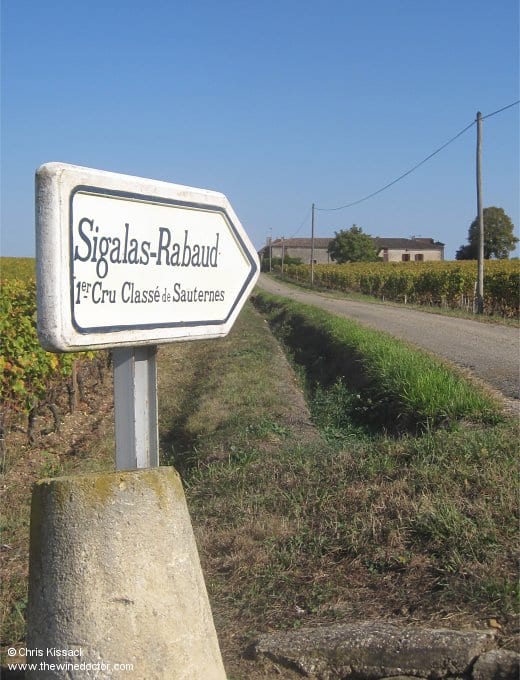Château Sigalas-Rabaud
The history of Château Sigalas-Rabaud may be traced as far back as 1660, when the estate was under the ownership of the de Cazeau family, who held tenure here for over 150 years before the property was sold. From then onwards, the Sigalas-Rabaud story has been one of division, functional if not complete reunion, expansion and then division once again, eventually giving rise to the properties that we know today as Château Sigalas-Rabaud. This division also led to the birth of Château Rabaud-Promis, which lies adjacent to Château Sigalas-Rabaud atop a small rise in the Sauternes landscape, just around the corner from Château Lafaurie-Peyraguey. I can’t help feeling, on looking at the two properties, that Rabaud-Promis came off slightly better in terms of the grandeur of its château but, as we all know, its the quality of the soils, the skill of the vineyard manager and the technical director, and of course the ultimate quality of the wine that really matters. And as far as quality goes, in recent years Sigalas-Rabaud has certainly been in the ascendant.
The Rabaud and Sigalas Families
Château Rabaud (the spelling could vary, with Rabeau being one alternative) began life with the Rabeau family, but when Madame Peyronne de Rabeau married Antoine de Cazeau in 1660 the estate came to him as part of her dowry. The property remained in the hands of its new owners through several generations, the family overseeing the construction of a château, in a low-lying chartreuse style, designed and built by the renowned architect Victor Louis (1731 – 1800), sometime around 1780. This château would eventually be the modern-day Château Sigalas-Rabaud.

